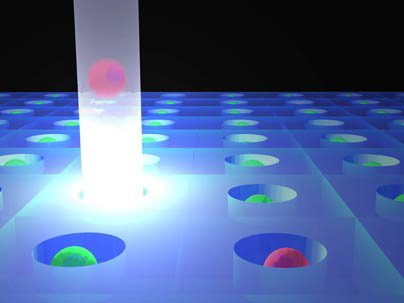|
Although the human body usually does an exceptionally good job of repairing damaged tissue, certain injuries cannot be overcome. For example, while most skin wounds will heal readily, the body cannot regrow missing limbs. Some animals, though, do regenerate parts of their body. Some lizards can regrow their tails, a deer can regrow its antlers, and the zebra fish regrows its tail.
The zebra fish is commonly studied in the laboratory. Researchers in the Salk Institute tried to discover how the fish accomplishes its feat of regrowing its tail. They started by looking at the genes that control tail growth during embryonic development. They assumed that these genes are being turned back on when the tail is lost in adulthood.
They discovered that genes controlling tail growth are activated by an enzyme known as methylase. The methylase removes certain chemical attachments from areas of the chromatin, the genetic material of the cell, which normally inhibits those genes from being expressed. With the inhibitor removed, the genes for tail growth express themselves.
However, when the zebra fish regrows its tail, it does not start with an embryonic cells and then move back down the same pathway that it followed during its initial development. Rather, the adult cells revert back to a less developed form, which then regrows to form muscle, nerve or bone. Seemingly, the adult cells retain a certain “memory” of the type of cell they used to be, which enhances the regrowth process.
Scientists are now looking at whether a similar process can be stimulated in the human body, to replace injured cardiac, nerve or muscle cells, which normally are resistant to regrowth. One advantage of the zebra fish tail regrowth mechanism is that it does not rely on embryonic stem cells, but on adult cells that revert to an earlier stage. Using embryonic stem cells in treating human disease is a complicated ethical issue, which is not the case for using adult cells.
The prophet Ezekiel describes a vision in which a valley of dry bones comes to life. The process by which they came to life was “inside out,” in which the skeletons regrew muscles, nerves, veins and organs. In contrast, an embryo develops from “outside in.” First the soft structures of the body are in place and then the skeleton grows to support the body tissues.
One of the prophecies of Redemption is that the dead will be resurrected. Our long-gone ancestors will return to reap the rewards of the Messianic era. This process will clearly be miraculous, as the entire body will have to be reconstituted out of dry bones. However, as science progresses we begin to have a foretaste of how this process will play out.
Prof. Yirmiyahu Branover is chairman of the Center of Magnetohydrodynamic Studies and Training at Ben-Gurion University.
|
